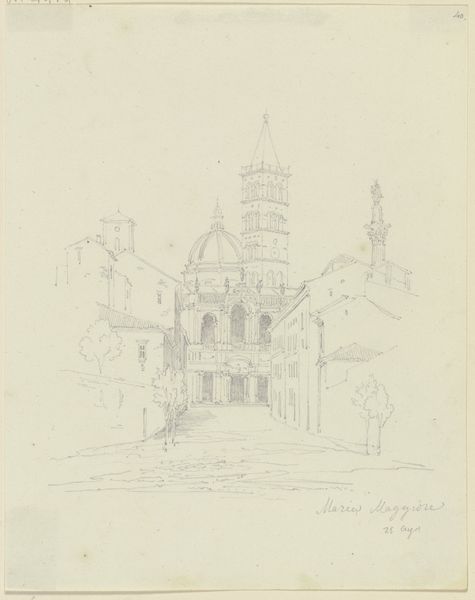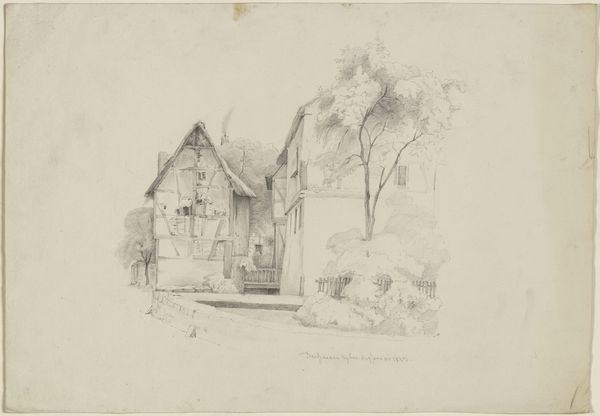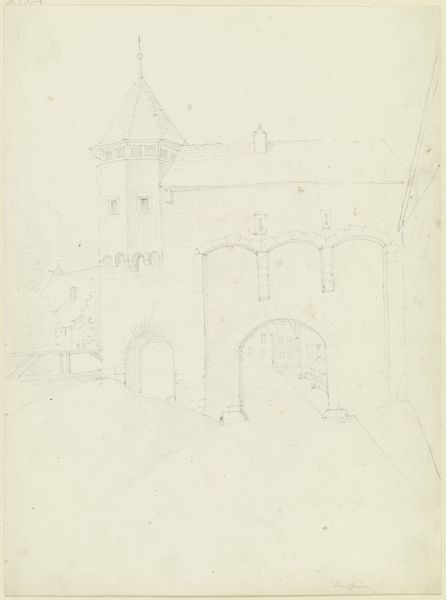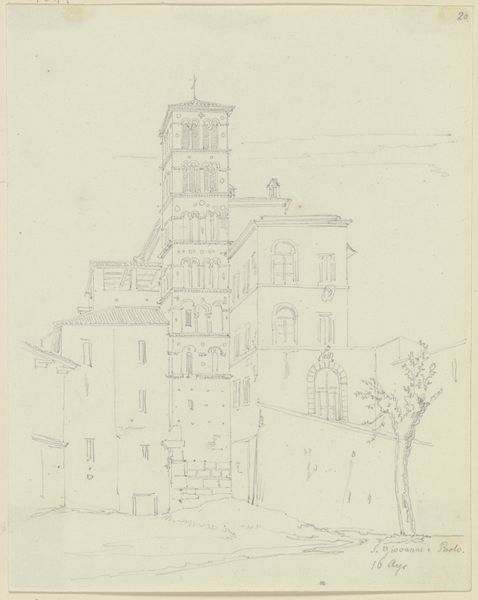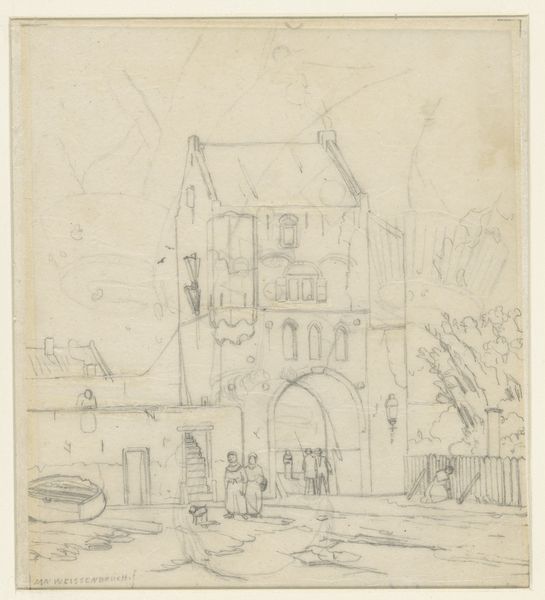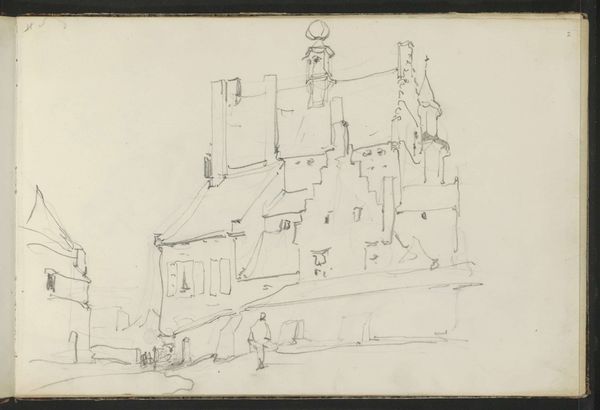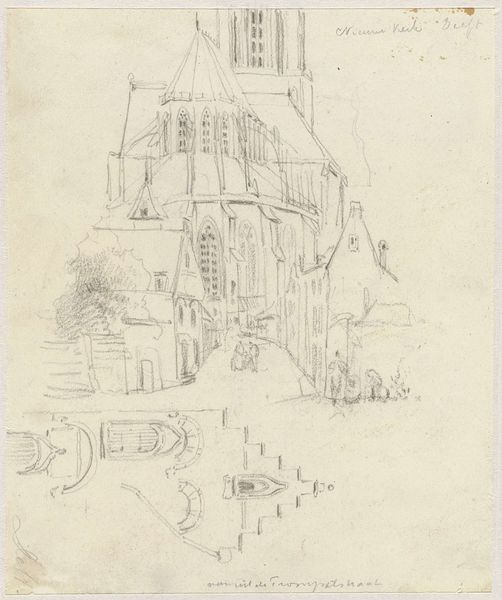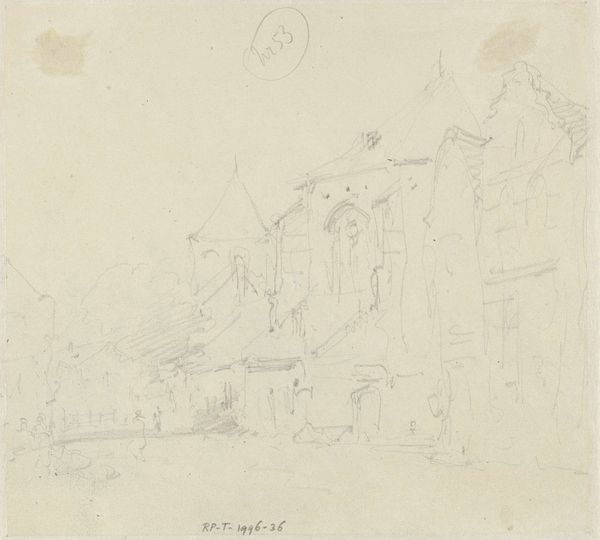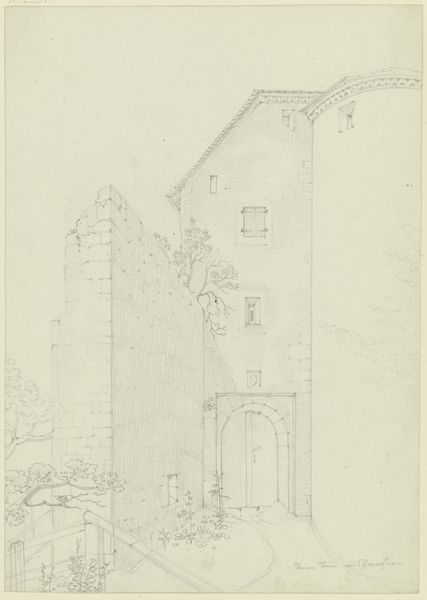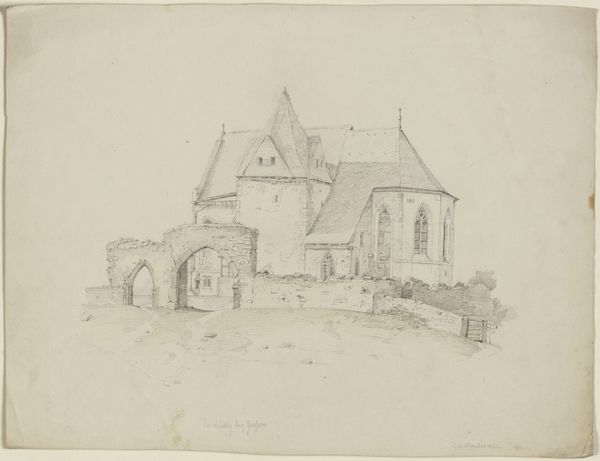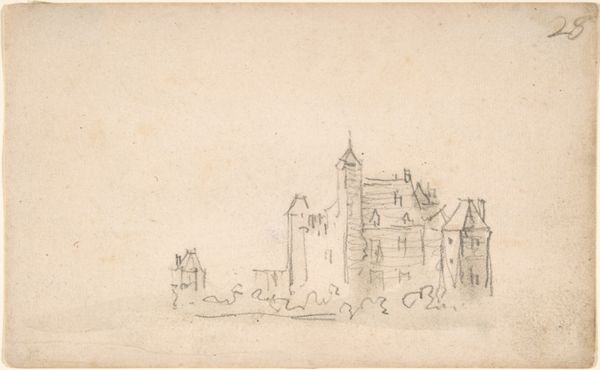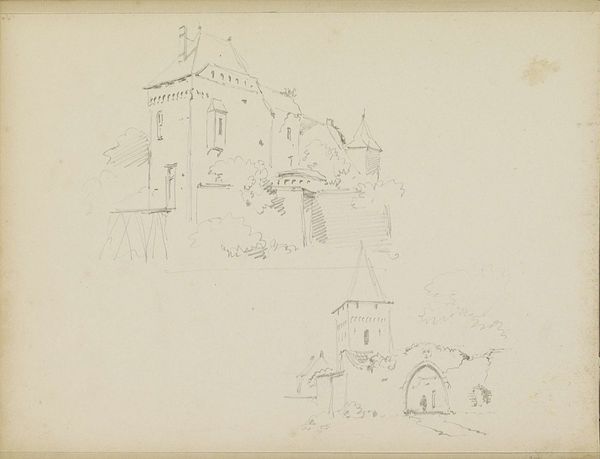
S. Giorgio in Velabro und der Janusbogen in Rom 24 - 1828
0:00
0:00
Copyright: Public Domain
Editor: Here we have Friedrich Maximilian Hessemer’s “S. Giorgio in Velabro und der Janusbogen in Rom,” created around 1824 to 1828, rendered delicately in pencil on paper. It's quite a striking cityscape! There's something melancholic in the starkness of the architectural details. What social or cultural context do you believe shaped Hessemer’s vision of Rome here? Curator: Well, given Hessemer's leanings toward both Neoclassicism and Romanticism, this drawing operates on several levels. The choice of subject matter – the church of San Giorgio in Velabro and the Arch of Janus – already points to a deliberate engagement with Rome’s layered history. We see the ancient world juxtaposed with Christian architecture. Consider this: How do you think the rise of historical consciousness and national identities in the 19th century influenced artistic choices? Editor: That’s interesting. The simultaneous interest in Neoclassicism and Romanticism makes this more than just a pretty picture; it feels like a commentary. Perhaps Hessemer is suggesting that Rome embodies a tension between these idealized pasts and the realities of his present? Curator: Precisely. And that tension is key. Notice how the pencil rendering, while detailed, also creates a sense of distance, an almost ghostly presence. What impression does this aesthetic quality make on you, thinking about the role of museums at that time? Editor: The somewhat detached style might be intended to invoke feelings of loss and transience. Considering the Romantic movement, perhaps he was trying to show the slow degradation of these magnificent architectural achievements that was occurring naturally and socially? It gives it a picturesque quality. Curator: Exactly. Museums and the art market played a crucial role in framing historical narratives. Think of how landscape paintings started being interpreted and used in political discourses during the early 19th century. Did any thoughts surface today about our roles as interpreters? Editor: Definitely. I am thinking now how his rendering style helps frame perceptions of the Roman past, influencing what people saw and how they understood it!
Comments
No comments
Be the first to comment and join the conversation on the ultimate creative platform.
